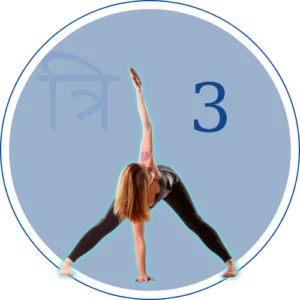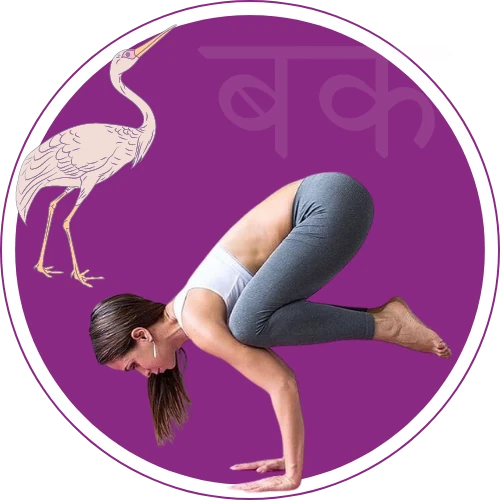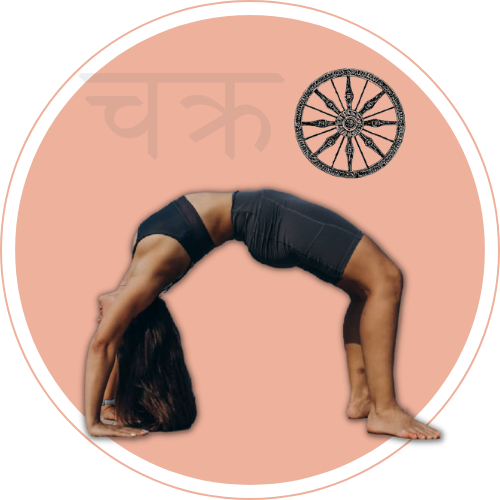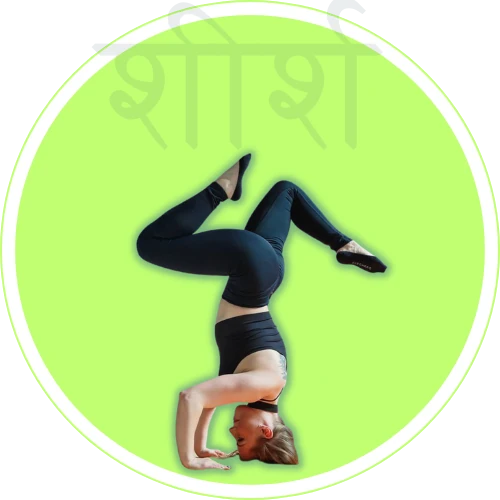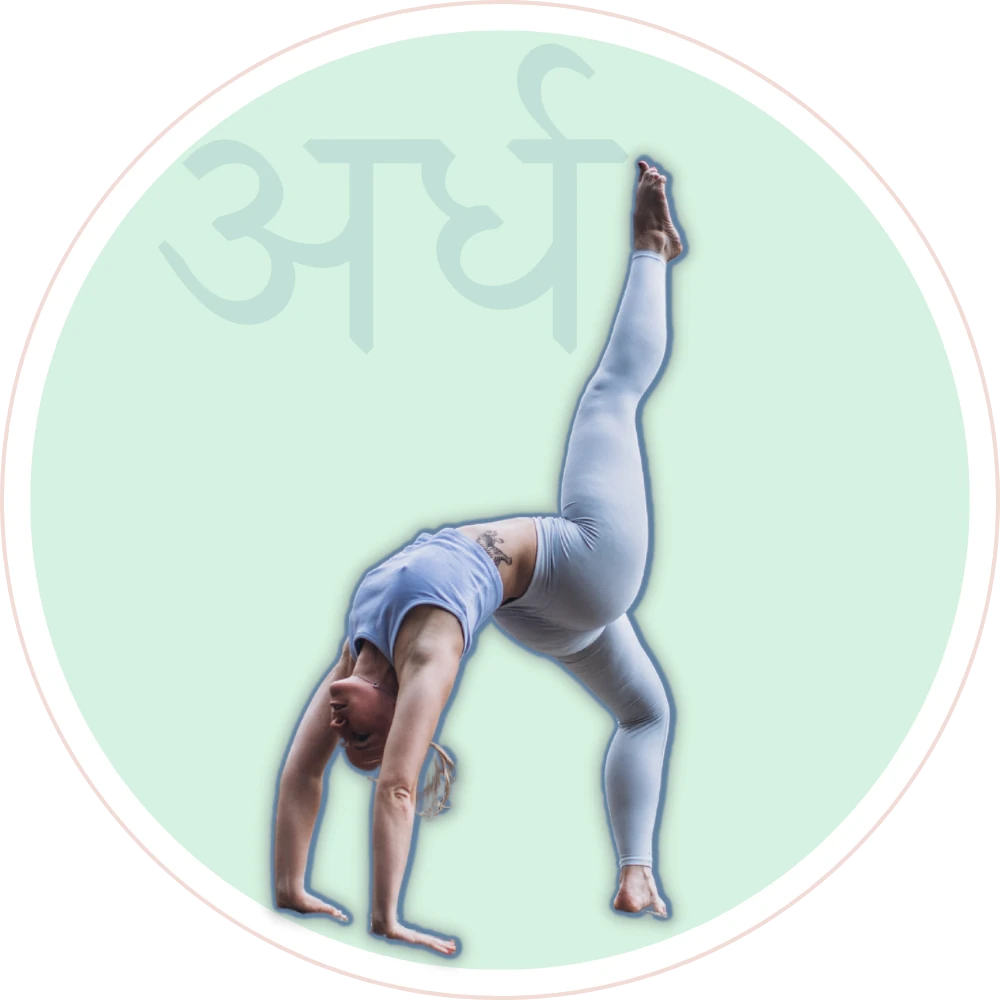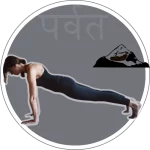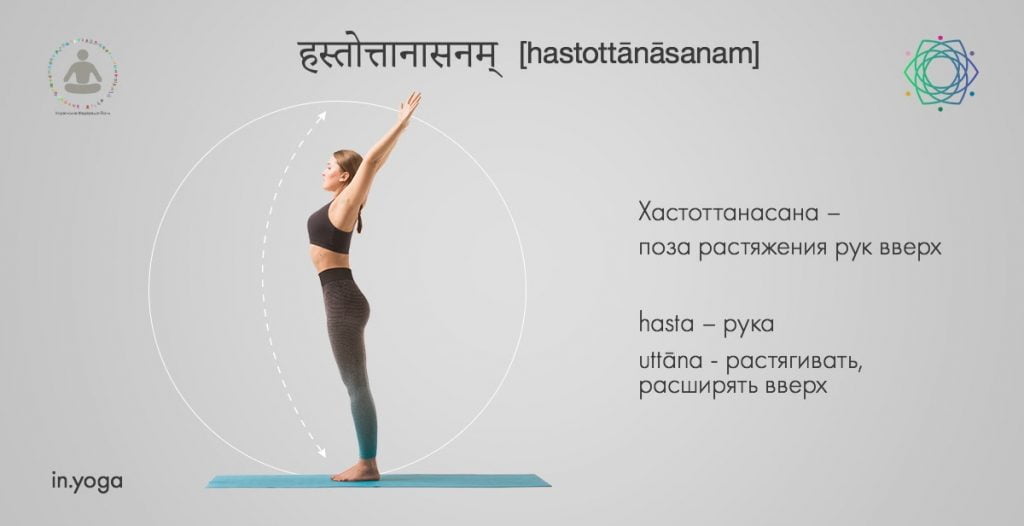Yoga asana dictionary
The meaning and synonyms of the word "asana"
In Sanskrit of the Kama Sutras and other Kama Shastras, asana is a sex position.
Just like "position" in English, in the texts about the structure of the state, asana is an administrative position.
In yoga texts, asana means a pose or position.
In the language of modern yoga, asana is a pose or exercise.
The word "asana" is derived from the root आस् ās "sit" with the suffix "ana" (an analogue of the suffix ing). So, literally, asana means sitting .
synonyms
Postures in the texts of hatha yoga were called not only “asana”. Other names are mudra (seal), kriya (action) and pitha (sitting).
The logic of asana names
Generally, asanas are named according to the principle of similarity or the principle of instruction.
The principle of similarity emphasizes the similarity of the body in asana with an object or animal.
The instruction principle describes which parts of the body are active in the asana and what happens to the body in the asana.
In such names of asanas there are numbers, parts of the body, directions, as well as indications of twisting, stretching or turning.
The word “ardha” can be added to any asana name. Ardha means half.
So, padmasana is the lotus pose, ardha-padmasana is half of the lotus pose.
The word “ardha” means that only half of the body is involved in performing the asana. Such postures are asymmetrical.
Some asanas and sequences are named after sages, deities, mythology.
For example, the Surya-namas-kara and Chandra-namas-kara sequences are dedicated to the Sun and the Moon as deities.
animals

Animal inspired asanas
• camel • ushtra • उष्ट्र • ushtra-asana
• pigeon • capota • कपोत • capota-asana
• crane • baka • बक • baka-asana
• snake • bgujanga • भुजङ्ग • bgujanga-asana
• cat • marjari • मार्जारी • marjari-asana
• rooster • kukkuta • कुक्कुट • kukkuta-asana
• fish • matsya • मत्स्य • matsyasana
• dog • shvana • श्वान • shvana-asana
• rabbit • shasha • शश • shasha-asana
• baby • bala • बालासन • baby pose
things
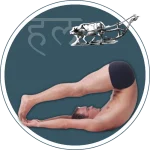
halasana – plow pose (shaped like a plow)
Asanas shaped like objects
• mountain • parvata • पर्वत • parvata-asana (mountain posture)
• wheel • chakra • चक्र • chakra asana (wheel pose)
• boat • nava • नाव • nava-asana (boat pose)
• lotus • padma • पद्म • padma-asana (lotus position)
• bow • dhanur • धनुर् • dhanur-asana (bow pose)
• plough • hala • हल • hala-asana (plough pose)
• angle • kona • कोण • tri-kona-asana (triangle pose)
numbers
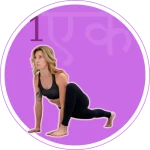
Numbers in the names of asanas
• 1 • eka •एक • eka-pada-prasarana-asana (pose with single leg extended)
• 2 • dwi • द्वि •
• 3 • three • त्रि • tri-kona-asana (triangle pose)
• 4 • chatur • चतुर् • Chatur-anga-dandasana (four-limbed staff pose)
• 5 • pancha • पञ्चन् •
• 8 • ashta • अष्टन् • ashta-anga-namas-kara (greeting in eight limbs), ashta-vakrasana
body parts
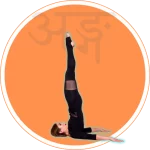
Body parts in the names of asanas
• head • shirsha, shiras, mukha • शीर्ष, शिरस् , मुख • shirsha-asana
• knee • janu • जानु• janu-shirsha-asana
• face • mukha • मुख • adho-mukha-asana
• foot • pada • पाद • pada-hasta-asana
• hand • hasta, bhuja, pani, bahu • हस्त, भुज, पाणि, बाहु • hasta-uttana-asana
• back • pashchima • पश्चिम • pashchima-uttana-asana
• body part, body • anga • अङ्ग • sarva-anaga-asana
• skull • kapala • कपाल • kapala-bhati
• eye • netra • नेत्र
• glance • drishti • दृष्टि
• ears • karna • कर्ण
• sense organ • karana, indriya, mandala • करण, इन्द्रिय, मण्डल
• neck • mane, kantha • ग्रीव, कण्ठ
• fingers • anguli • अङ्गुली
• inner side of the palm • करपृताल• kara-tala
• wrist • मणिबन्ध • mani bandha
• elbow • kaphoni • कफोणि
• shoulder blade • bahu-mula • बाहुमूल
• chest • skandha, uras, vaksha-sthala • स्कन्ध, उरस्, वक्षस्थल
• belly • blow • उदर
• waist, buttocks, lower back, thigh • kati • कटि
• thigh • jangha • जन्घ
• calf-muscle • pindali • पिण्डली
• ankle • gulpha • गुल्फ
• toes • pada-anguli • पादाङ्गुली
actions and directions
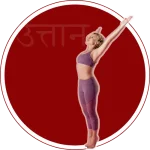
Actions and directions in the names of asanas
• half • ardha • अर्ध • ardha
• down • adho • अधो • adho-mukha-vriksha-asana
• up • urdhva • ऊर्ध्व • urdhva-mukha-shvana-asana
• stretched • uttana • उत्तान • hasta-uttana-asana
• twisted • parivritta, vakra • परिवृत्त, वक्र • parivrtta-trikona-asana
• inverted • viparita • विपरीत • viparita-karani
• ‘the doer’/who makes • kara • कर • kumbha-kara
• lateral • parshva • पर्श्व • parshva-kona-asana
names
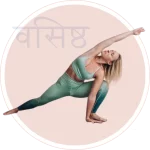
Yogis' names in the names of asanas
• Matsyendra • मत्स्येन्द्र • matsyendra asana
• Vasistha • वसिष्ठ • vasishthasana (side support)
• Hanuman • हनुमन् • hanuman-asana
Video exercises to remember the names of asanas
The name of the Surya Namaskar sequence
In Sanskrit, one of most popular sequence names sounds like “soorya-namas-kaara” – with two long vowels and an “a” at the end.
Suryanamaskara सूर्यनमस्कार – sūryanamaskāra is a compound word,
consisting of three nouns:
sūrya – name of the sun, masculine noun,
namas – greeting or salutation, neuter noun,
kāra – who makes or doing, masculine noun.
Literally, the term translates to “doing salutation to the sun.”
In the colloquial version, we omit the word “doing”
and leave “salutation to the sun.”
The section of the site dedicated to sequences.
Different images of yoga asanas
Kukkutasana (rooster pose)
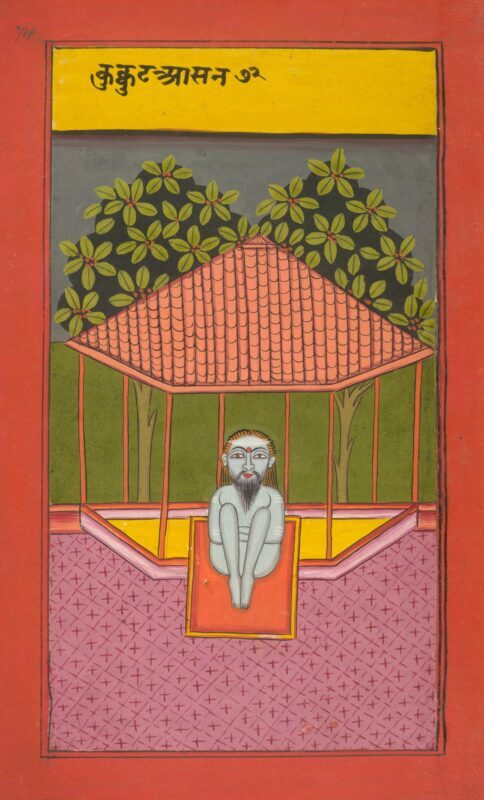
Joga-deepika, 19th century, British Library
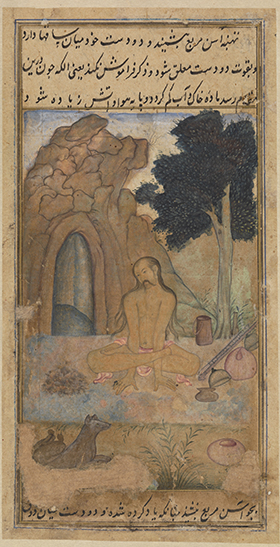
Kukkutasana, Bahr al-khayat (Ocean of Immortality)

